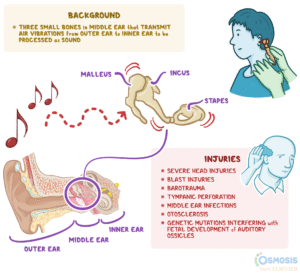Pelvic Pain in Women and Men
Understanding Pelvic Pain in Both Men and Women
Pelvic pain refers to discomfort or pressure in the lower abdomen, typically under the navel. This pain can be continuous or intermittent and may come with other symptoms like abnormal vaginal bleeding or lower back pain. The causes of pelvic pain are varied, affecting both men and women, and can stem from issues in the urinary or gastrointestinal systems. For women, conditions related to the reproductive system, such as endometriosis, fibroids, or ectopic pregnancy, are often culprits. Seeking medical advice is crucial if you experience persistent pelvic discomfort. This article delves into the causes of pelvic pain, the symptoms that help distinguish different conditions, and treatment options for both men and women.
What is Pelvic Pain?
Pelvic pain is typically localized in the lower abdomen, around the pelvis. The pelvic cavity is a bowl-shaped structure that begins at the top of your hip bones and extends down to the groin. This area houses various organs including the bladder, rectum, colon, and reproductive organs. Issues affecting these organs or the surrounding muscles and ligaments can result in pelvic pain.
Common Causes of Pelvic Pain in Both Men and Women
Pelvic pain can result from conditions that affect both men and women. These conditions involve shared anatomical structures, and understanding them is vital for both sexes.
Irritable Bowel Syndrome (IBS)
IBS is a functional gastrointestinal disorder that causes:
-
Abdominal pain, often worsened by stress or eating
-
Bowel movement changes (diarrhea, constipation)
-
Bloating
-
Feeling of incomplete bowel evacuation
-
Mucus in the stool
Urinary Tract Infection (UTI)
A UTI is a bacterial infection affecting the urethra, bladder, or kidneys. Symptoms may include:
-
Pelvic pain near the bladder
-
Frequent urges to urinate
-
Pain or burning during urination
-
Blood in the urine
Older adults may exhibit less common symptoms such as confusion, fatigue, and incontinence.
Kidney Stones
Kidney stones form from minerals in the urine and may cause:
-
Severe pain, especially during urination
-
Frequent urges to urinate
-
Blood in the urine
-
Nausea or vomiting
Sexually Transmitted Infections (STIs)
STIs, which can be spread through sexual contact, may cause symptoms such as:
-
Genital discharge
-
Painful urination
-
Genital sores or rashes
Appendicitis
This is a serious condition where the appendix becomes inflamed. Symptoms include:
-
Sudden abdominal pain
-
Loss of appetite
-
Fever
-
Nausea or vomiting
Cystitis
Cystitis is the inflammation of the bladder, usually caused by an infection. It can lead to:
-
Cloudy or blood-tinged urine
-
A strong odor in urine
-
Painful urination
Pelvic Pain in Women
For women, pelvic pain is often linked to the reproductive system. The conditions listed below are common causes of pelvic discomfort.
Ectopic Pregnancy
An ectopic pregnancy occurs when a fertilized egg implants outside the uterus, most often in the fallopian tube. Early symptoms may resemble a normal pregnancy but include:
-
Abnormal vaginal bleeding
-
Low back pain
-
Cramping
-
Severe abdominal pain
-
Shoulder pain (referred from the abdomen)
If the fallopian tube ruptures, it can be a life-threatening emergency requiring immediate medical intervention.
Pregnancy-Related Pelvic Pain
Mild pelvic pain and cramping are common in healthy pregnancies, particularly in the early stages. However, more severe pelvic pain, known as pregnancy-related pelvic girdle pain, typically appears during the second or third trimester. This discomfort results from weight gain and hormonal changes, especially the hormone relaxin, which loosens ligaments in preparation for childbirth.
Pelvic Inflammatory Disease (PID)
PID is an infection affecting the uterus, ovaries, or fallopian tubes, often caused by STIs like chlamydia or gonorrhea. Symptoms may include:
-
Fever
-
Unusual vaginal discharge with a foul odor
-
Pain during intercourse or urination
Endometriosis
Endometriosis occurs when tissue similar to the uterine lining grows outside the uterus. This condition can cause pain during menstruation, intercourse, urination, or bowel movements.
Fibroids
Uterine fibroids are non-cancerous tumors that can cause:
-
Heavy menstrual bleeding
-
Pelvic fullness
-
Frequent urination
-
Painful intercourse
Gynecological Cancers
Pelvic pain may also be a sign of gynecological cancers, though pain is typically more pronounced once the cancer has advanced. For example, ovarian cancer may lead to pain, bloating, and changes in bowel habits.
When to Seek Medical Attention for Pelvic Pain
It’s important to seek immediate medical attention if your pelvic pain is severe, sudden, or accompanied by unusual symptoms like fainting or heavy bleeding. Early intervention can prevent complications and improve outcomes, particularly in cases involving infections, ectopic pregnancy, or cancer.
Managing and Treating Pelvic Pain
Treatment for pelvic pain depends on its underlying cause. Options may include medication, physical therapy, lifestyle changes, or surgery. In some cases, alternative therapies like acupuncture or relaxation techniques may provide relief.
Key Takeaways
Pelvic pain can arise from a variety of causes affecting both men and women. Understanding the underlying conditions is crucial for effective treatment and management. Whether it’s due to a gastrointestinal issue, infection, or reproductive health condition, prompt medical evaluation and intervention are essential for addressing pelvic pain effectively. Always consult a healthcare provider if you experience persistent or severe pelvic discomfort





